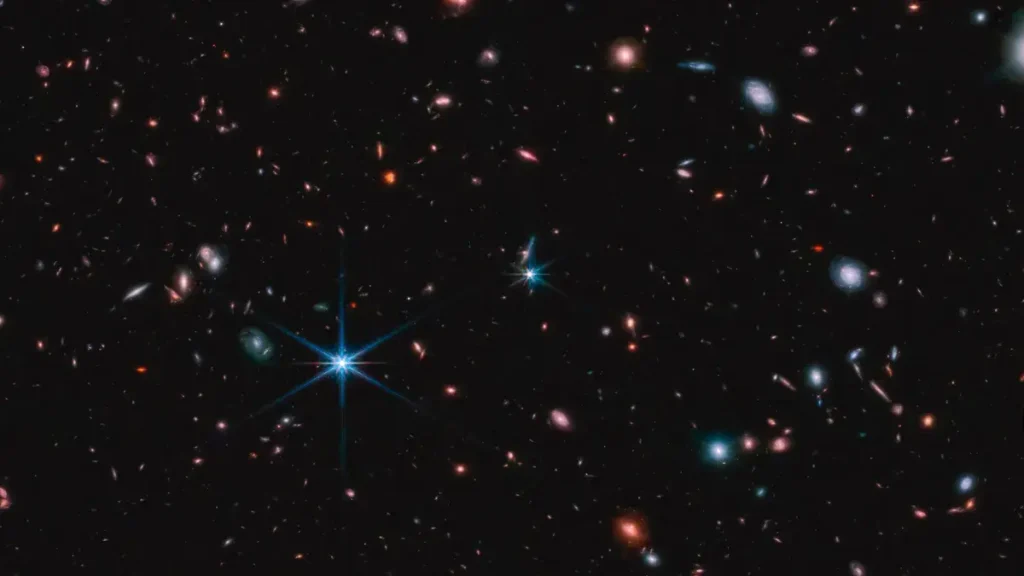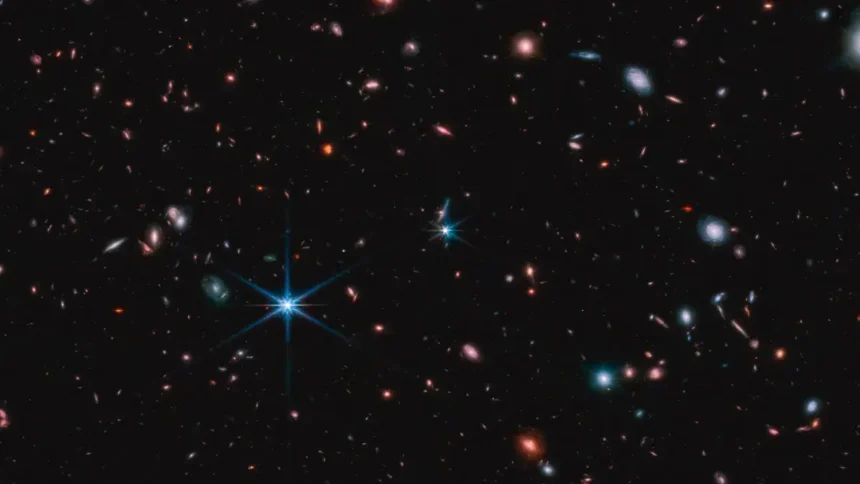August 11, 2023
Introduction
In a groundbreaking discovery that pushes the boundaries of our understanding of the cosmos, NASA’s James Webb Space Telescope (JWST) has identified a colossal celestial body named Earendel, a massive B-type star located in the Sunrise Arc galaxy. This extraordinary finding not only marks the most distant star ever detected but also provides invaluable insights into the early stages of the universe.

Earendel, with its scorching temperature more than double that of our own sun and a luminosity a million times greater, was first brought to the attention of the astronomical community by the Hubble Space Telescope. Believed to have emerged within a billion years of the Big Bang, Earendel’s existence and characteristics have fueled the curiosity of scientists.
Detection achieved
The awe-inspiring detection of this blazing star was achieved through the phenomenon of gravitational lensing. The gravitational pull of a massive foreground object, the galaxy cluster WHL0137-08 in this instance, acted as a lens, bending and magnifying the light emanating from the remote body. As a result, the JWST’s Near-Infrared Camera (NIRCam) captured Earendel as a solitary point of light, indicating its diminutive size while being magnified by an astonishing factor of at least 4,000. This phenomenon has crowned Earendel as the most distant star ever glimpsed, a star that shone just a mere billion years after the universe’s inception.
The new insights don’t stop at Earendel alone. Astronomers have noted tantalizing hints of a companion star, possibly cooler and redder in nature. The expansion of the universe has stretched the companion’s light to wavelengths that are beyond the range of the Hubble Space Telescope’s instruments, rendering it visible only through the capabilities of the JWST.
More celestial discoveries in place
The JWST’s NIRCam has bestowed astronomers with more than just the glimpse of a distant star. The telescope’s observations have unearthed other celestial marvels within the Sunrise Arc galaxy. Young, star-forming regions dot the landscape, offering a glimpse into the birth of new stars. Amidst this cosmic ballet, older star clusters have also been revealed, their existence estimated at around 10 million years.
These revelations have sparked a sense of excitement among the scientific community. Researchers believe that these discoveries could pave the way for identifying the very first generation of stars that sprang forth from the primordial universe, comprised solely of hydrogen and helium—the fundamental building blocks of our cosmos.
As the JWST continues its vigilant exploration of the cosmos, it not only unravels the mysteries within our solar system but also peels back the veils shrouding distant worlds around faraway stars. The awe-inspiring journey of Earendel serves as a testament to the power of human curiosity and our ability to probe the most remote corners of existence.
Conclusion
In an era where the boundaries of knowledge are constantly stretching. The Webb Telescope’s revelations affirms that the universe still holds countless enigmas that awaits us, ensuring that the pursuit of discovery remains an unceasing quest.






